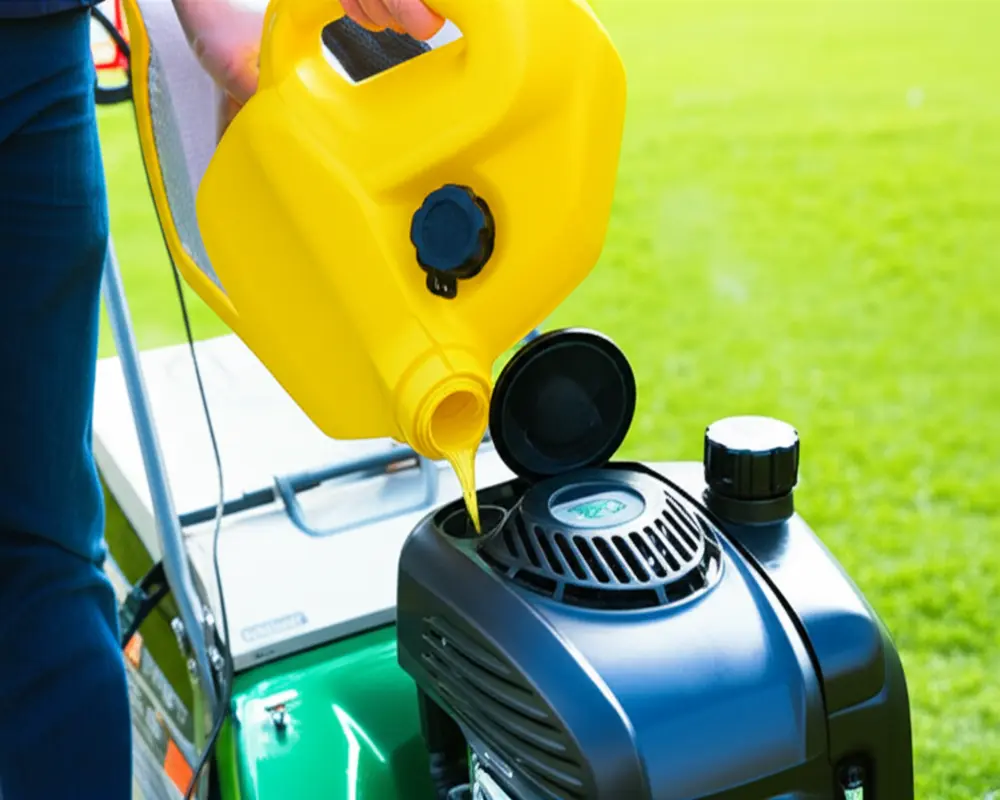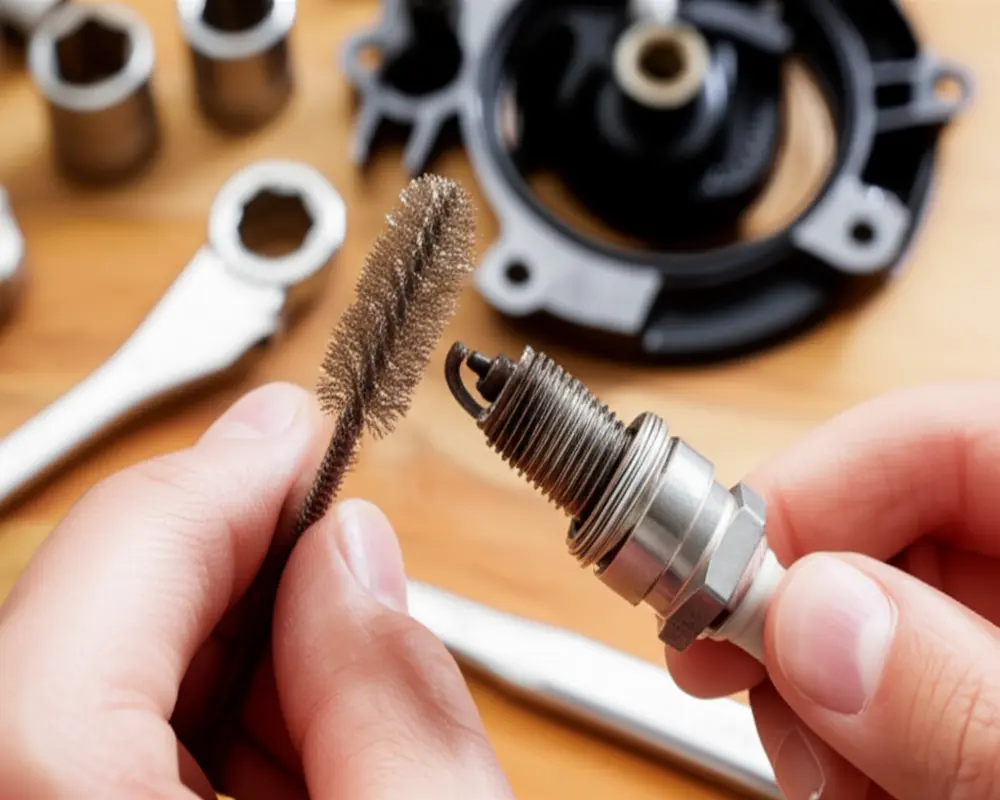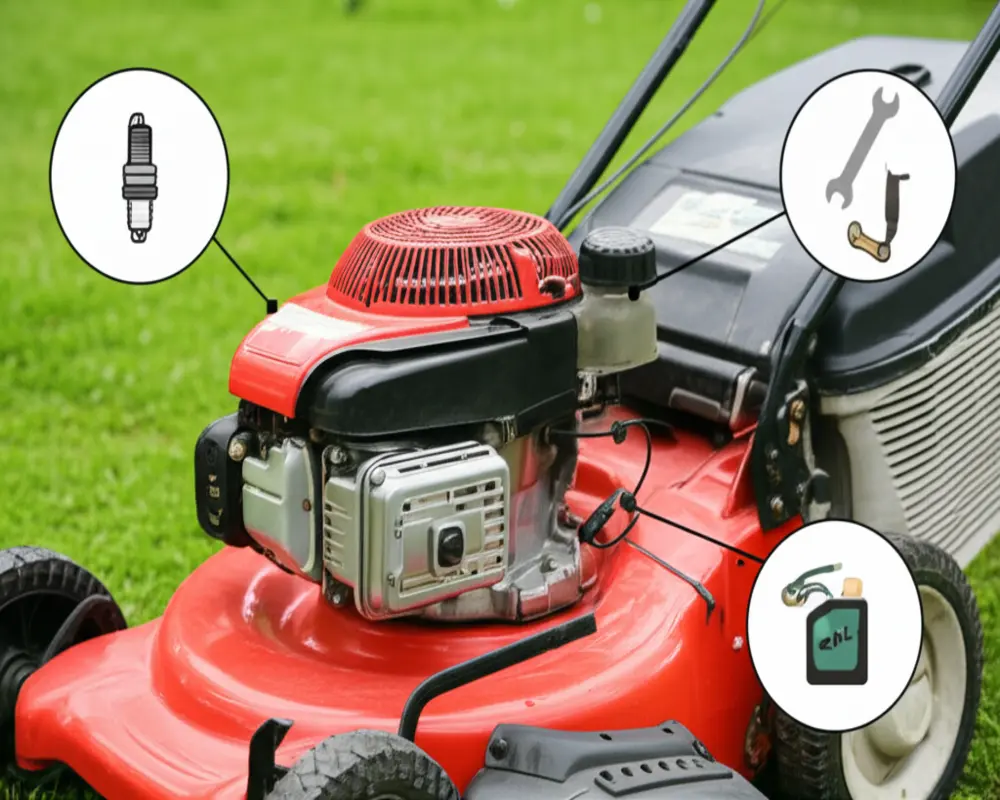Lawn Mower Won’t Start: The Ultimate Troubleshooting & Fix Guide
I. Introduction: Get Your Mower Roaring Again
When your lawn mower won’t start, it can be a source of genuine frustration—especially when yards need urgent attention. The dead mower scenario is common, but it doesn’t always mean a costly repair or replacement. With a systematic and expert-backed approach, you can diagnose and fix common problems yourself. This guide offers step-by-step instructions based on real-world mechanic experience and DIY know-how, ensuring you get your mower running reliably again.
Thank you for reading this post, don't forget to subscribe!Important Safety First! Always disconnect the spark plug before beginning repairs, wear protective gloves and eye protection, and handle fuel with caution to avoid hazards.
II. Essential Pre-Checks: The Absolute Basics
Start your troubleshooting journey with these fundamental checks to rule out the simplest causes of mower startup failure.
Is There Enough Fuel? Always verify that your fuel tank has enough gasoline, and that it’s fresh and not stale, as old fuel can cause starting issues. Stale fuel often loses its combustibility and results in poor engine performance or failure to start. 
Is the Choke in the Correct Position? The choke regulates airflow to the carburetor and is crucial for cold starts. Ensure it’s enabled during cold starts and adjusted properly for running when warm.
Is the Spark Plug Wire Connected? Without secure spark plug wire connection, the engine won’t ignite. Check that it’s firmly attached to the spark plug and engine.
Is the Blade Clear? Obstructions such as grass clippings or debris can prevent the blade and crankshaft from turning properly, stopping the mower from starting.
Is the Safety Bar or Bail Engaged? Many mowers have safety features that prevent the engine from starting unless the bail or safety lever is held down; verify its proper functioning.
III. The Core Troubleshooting Sequence: Fuel, Air, Spark
A. Fuel System Issues
Fuel-related problems rank among the most frequent causes of lawn mower starting problems. Stale or old gasoline can gum up the engine, making it difficult or impossible to start. Draining old fuel entirely and refilling with fresh gasoline ideally without ethanol (or with stabilizers) prevents gumming and fuel degradation.
Fuel filters can clog over time from particles in fuel storage, restricting flow. Locate the filter, assess for blockages, and replace if necessary to restore clean fuel flow.
The fuel line can also become clogged or cracked, resulting in insufficient fuel reaching the engine. Checking fuel flow involves disconnecting the line and inspecting it for blockages or leaks. Cleaning or replacement may be necessary.
Carburetor Problems often manifest after periods of disuse or from contaminated fuel. Symptoms include rough starting or engine stalling. Cleaning the carburetor with a dedicated cleaner or rebuilding using a kit is a recommended repair. Float bowl issues within the carburetor may also need inspection and adjustment to regulate fuel delivery correctly.

B. Ignition System Issues
The ignition system’s chief component, the lawn mower spark plug, plays a critical role in starting. Fouled, corroded, or damaged spark plugs can prevent ignition. Inspect the spark plug for carbon deposits or wear, clean it with a wire brush, gap it to manufacturer specs, or replace it as necessary.

Faulty ignition coils produce weak or no spark even if the spark plug is fine. Testing involves using a spark tester and replacing the coil if no spark is generated. Additionally, kill switches or safety system malfunctions caused by wiring corrosion, damage, or poor connections can disrupt the ignition process and require inspection.
C. Air System Issues
A clogged air filter reduces airflow, creating a rich fuel mixture that hinders ignition and engine performance. Inspect air filters regularly, clean or replace them to maintain proper airflow and combustion efficiency.
Obstructions in the exhaust system, including mufflers and exhaust ports, can also affect starting by preventing the efficient expulsion of exhaust gases. Check and clear these as part of your troubleshooting routine.
IV. Other Common Mechanical & Electrical Issues
Beyond fuel, air, and spark, several mechanical components affect mower start reliability.
Engine Compression: Low compression due to worn piston rings or cylinder issues disables efficient combustion. Use a compression tester to diagnose this vital parameter.
Recoil Starter: For manual-start mowers, a broken rope, seized pulley, or worn pawls can prevent pulling the engine over. Inspect the starter assembly and repair or replace damaged elements.
Flywheel Key Sheared: A sheared flywheel key causes timing issues, recognizable via grinding noises or engine stalling. Inspection and advanced replacement restore engine timing.
Battery Issues (Electric Start): Electric mowers rely on batteries for ignition. Symptoms of failure include clicking sounds but no engine crank. Clean terminals, test voltage, charge or replace the battery as appropriate.
Starter Motor/Solenoid: Faulty parts can prevent electric starting. Basic electrical tests and replacement tip the balance toward repair or replacement.
V. Problem-Specific Scenarios
Knowing exact symptoms guides more targeted repairs.
“My Lawn Mower Cranks But Won’t Start”: Focus on fuel delivery and spark generation systems as culprits.
“My Lawn Mower Starts Then Dies”: Typical of carburetor fuel flow irregularities requiring cleaning or adjustment.
“My Lawn Mower Won’t Start After Winter Storage”: Check for stale fuel and clean or rebuild the carburetor accordingly.
“My Lawn Mower Only Runs With Choke On”: A classic symptom of carburetor main jet clog that restricts fuel flow.
VI. Tools & Replacement Parts You Might Need
Your DIY toolkit for mower repair ideally includes a spark plug wrench, screwdrivers, pliers, wire brush, fuel line clamp, and a funnel for fuel handling. Useful additions are spark testers, feeler gauges, multimeters, compression testers, and torque wrenches.
Keep essential parts handy such as spark plugs, air filters, fuel filters, fuel lines, carburetor cleaner, and fuel stabilizers.
VII. Preventative Maintenance: Avoid Future Starting Problems
Proper upkeep extends mower life and minimizes unexpected starting failures. Before storing mowers for winter or long periods, use fuel stabilizers, run the engine until dry, maintain battery charge, and check spark plugs. Regularly replace spark plugs and air filters, change oil, sharpen blades, and keep the mower clean.
Using the right fuel is also critical—choose octane levels following manufacturer recommendations and be wary of ethanol content which can degrade sooner.
Explore related tips on rust prevention for garden tools to complement your mower maintenance.
VIII. When to Call a Professional or Consider Replacement
DIY repair is fulfilling but has limits. Seized engines or significant internal damage often require qualified professional attention. Consider the cost-benefit of repair vs replacement based on mower age and damage severity.
When needed, search for trusted local repair shops with reputable reviews to handle advanced diagnostics or rebuilds.
IX. Frequently Asked Questions (FAQs)
- How to drain old gas from a lawn mower?
- Drain the fuel tank by siphoning or removing the drain plug if available. Dispose of old gasoline safely, and refill the tank with fresh fuel mixed with stabilizer if possible.
- Can car spark plugs be used in a lawn mower?
- Generally, lawn mower spark plugs differ in size and heat range; it’s best to use plugs specified for your mower to ensure proper engine performance and longevity.
- Why does my mower only start with starting fluid?
- Starting fluid compensates for poor fuel delivery or carburetor issues, indicating fuel system problems that need cleaning or repair.
- How often should the air filter be changed?
- Inspect filters monthly during active mowing seasons and replace at least annually or sooner if visibly dirty or clogged.
- What’s the best fuel for a lawn mower?
- Use fresh unleaded gasoline with an octane rating of 87 or higher. Avoid fuel with more than 10% ethanol unless the manufacturer specifies tolerance.
X. Conclusion: Empowering You to Tackle Mower Troubles
This comprehensive guide walks you through lawn mower troubleshooting from basics to advanced checks. By understanding fuel, spark, and air systems along with mechanical components, you’re well equipped to diagnose and fix starting problems confidently. Regular maintenance and proper storage are your best defense against future issues. Take control of your mower’s health and enjoy a smoothly running machine season after season.
For additional gardening tool maintenance insights, consider reading about hand cultivator maintenance and practical upkeep tips to keep your garden tools in top shape.
For more expert advice and in-depth guides, visit Family Handyman’s comprehensive lawn mower repair resource, Bob Vila’s troubleshooting articles, and manufacturer guidance like John Deere’s mower start instructions.

